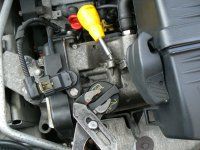The Euro6 engine was never fitted to the 169; that didn't come until well into the 312 era.
The £30RFL Eco models of the 169 used the 60HP Euro4 until late summer 2010, then the 69HP VVT Euro5 until the end of production. Most important difference is the Euro5 is an interference engine; the Euro4 is cambelt safe. Also the thermostat and coil packs aren't interchangeable between the two versions.
Not all 1.2's made the £30 RFL cut; the Eleganza and 4x4 remained in the higher band until the end of production; the alloy wheels and wider tyres on the Eleganza added just enough extra resistance to push it over the limit. The 1.4 100HP obviously never came close.
I don't think the Eleganza ever got the Euro5 engine, but when they started fitting it to the 1.2 Eco, the slight increase in efficiency (on paper at least) meant that Fiat could fit alloy wheels as standard to the Dynamic and still make the £30 RFL cut.
Also the 1.1 was never produced in Euro5 form; the last of the 169 Actives are Euro5 and got the 1.2 engine.
IMHO the Euro4 1.2 was the best engine of the lot; it's more flexible then the 69HP Euro 5, and actually makes more power & torque below 3500rpm. The Euro4 Dynamic Ecos, with remote locking and A/C as standard, could be bought new in the day for around £6600 and might just possibly be the best value for money car Fiat have ever made. Many have been well looked after, and those are still worth buying today.


